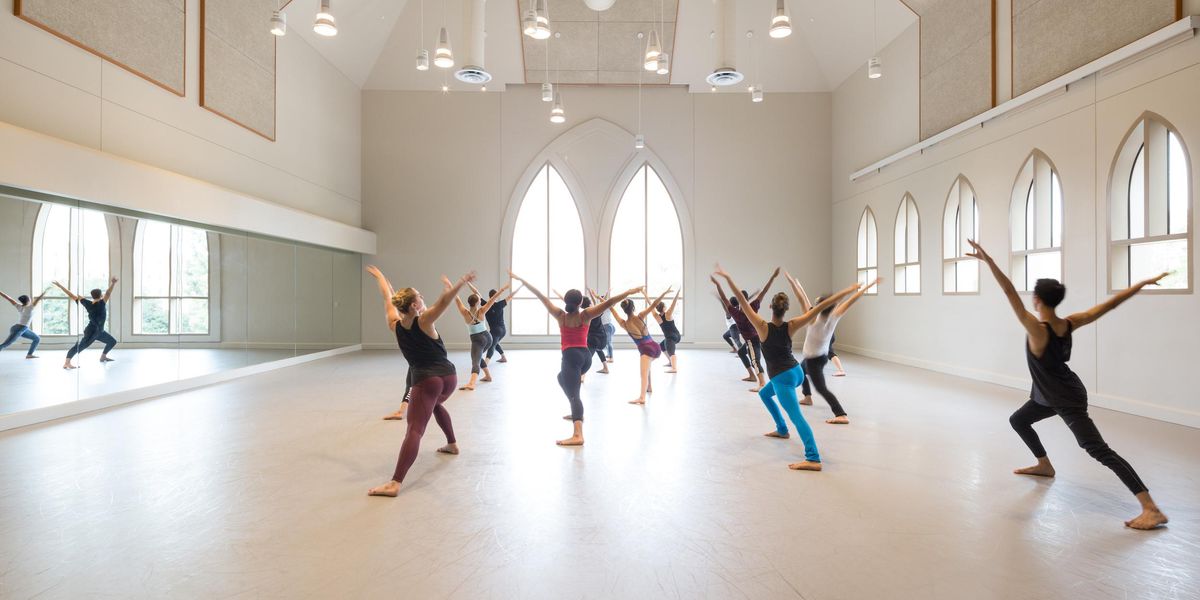Continuing Thoughts on Restless Creature
Each of the four choreographers found a different treasure in Wendy Whelan.
Alejandro Cerrudo found a partner in his liquid foray of extending gesture into full-out movement, a dancer who could curve her back to great expressive depth.
Photo of Cerrudo and Whelan by Christopher Duggan, Courtesy Jacob’s Pillow:
Joshua Beamish found someone who could match his disembodied, staccato moves but also provide a picture of elegance swooping in a red dress. With the faintest hint of subservience, he stroked her dress, fetish-like, and bowed down, head nestled in that dress. He also found someone he could waltz with, ballroom style.
Photo of Whelan and Beamish by Christopher Duggan, Courtesy Jacob’s Pillow.
Kyle Abraham found a fellow stealth mover who entered a slightly dangerous territory with him. The moments when one touched the other were spare and carefully placed. At one point, he slowly arched back while she held him. When he was so far back that his balance was precarious, she reached and—caressed his arm.
Photo of Whelan and Abraham by Christopher Duggan, Courtesy Jacob’s Pillow.
And Brian Brooks found a creature who is as light as air and for whom he could be the crumbling ground she falls on.
Photo of Brooks and Whelan by Christopher Duggan, Courtesy Jacob’s Pillow.
OK, this is NOT a review, because I already produced what amounted to an advance story in my “Choreography in Focus.” But I’m going to continue with my thoughts here because they expanded as I thought them.
Cerrudo, Abraham, and Beamish are also “creatures” and fascinating to watch at any time. It is therefore just right to end with Brian Brooks, whose plainness as a performer and clarity as a choreographer (his relationship to her was the most humble) anchored the evening and gave the focus back to Whelan.
It’s not unusual for a star performer to create her own program. But only with Wendy Whelan could an event of this nature turn out to be so hugely generous. Restless Creature, as seen at Jacob’s Pillow, goes beyond the narcissisism of putting a great ballerina on display. What comes across is Whelan’s hunger for artistic challenges and her ability to stimulate choreographers. Instead of choosing established dance artists whose success would be more assured, she took the risk of inviting younger guys, giving them some visibility. In this she emerged an impresario as well as a performer.
In choosing these particular dancer/choreographers—at least two of whom are more postmodern than ballet—Whelan shows a sharply contemporary vision, the kind that ballet is in great need of now. And in asking the four men to dance with her, she’s fulfilling a desire that probably many dancers have about their favorite choreographers. This decision also nicely blurs the line between dancer and choreographer.
And this: With supreme/serene self-knowledge, Whelan has changed the yardstick by which her dancing can be judged. Restless Creature takes her outside the New York City Ballet mold and places her in a more grounded, less position-oriented, more spiritual realm of dance. There was such consistent choreographic interest in this program, and Whelan is such a transcendent performer, that the evening was deeply satisfying. Images of all four works have lingered in my mind.




